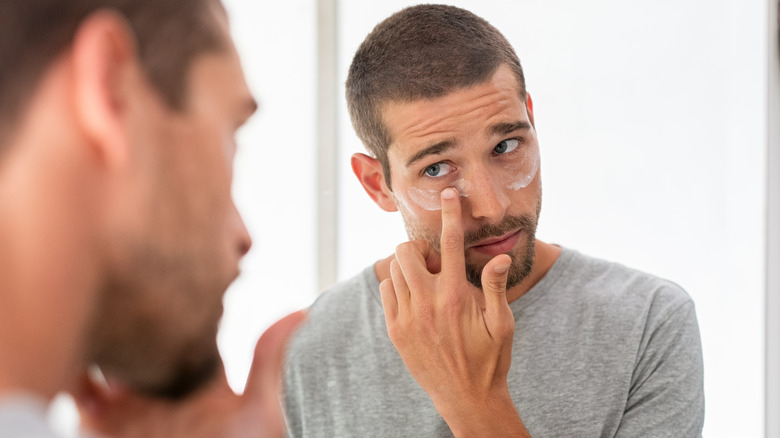How To Treat Uncomfortable Wind Burn On Your Face
While the idea of getting burned is often thought of in connection with heat, there's a different type of burn we can also incur from the cold — specifically, wind burn. Redness, burning sensations, soreness, and peeling are all symptoms of windburn that can emerge after the skin on our face has come in contact with harsh wind or frigid air, reports Medical News Today. Most often, signs of windburn can be seen on the nose and cheeks, dermatologist Dr. Melissa Piliang tells Self.
The combination of gusty winds, low humidity, and decreased temperatures is a recipe for skin damage, according to experts at Prevention. Furthermore, those who enjoy outdoor activities during the snowier months of the year can be additionally susceptible to windburn. "Skiing is probably one of the most common activities that can cause windburn, but winter runs, snowboarding, long distance bicycling, motorcycling, boating, or other outdoor recreational activities can also lead to this reaction," board-certified dermatologist at Coast Dermatology in California, Dr. Michael Kassardjian, tells Prevention. Thankfully, windburn will generally take care of itself within a matter of days if it's not too severe. Even so, experts offer tips for how to treat the discomfort of windburn as the body heals.
The importance of hydration
Since wind burn strips our skin of moisture, hydration is key. In addition to drinking ample amounts of water, be sure to routinely apply a fragrance-free moisturizer with either ceramides, shea butter, colloidal oatmeal, or hyaluronic acid, amongst other ingredients to help repair the damage done to the skin's protective barrier (per Medical News Today). However, steer clear of alcohol-based products, toners, exfoliants, and astringents, which can be rough on the skin. Additionally, you'll want to cleanse your face one or two times daily to help counteract the greasiness that can develop from product use. When washing, avoid hot water, which can further exacerbate symptoms. Instead, opt for lukewarm water and limit shower time to no more than 15 minutes to help preserve moisture, advises dermatologist, Dr. Rajani Katta, via Self.
To relieve discomfort or irritating itching sensations, try a hydrocortisone cream or over-the-counter pain reliever, suggests Medical News Today. You'll want to avoid scratching and sun exposure as much as possible to allow the body to heal and protect against further skin injury. "If the skin starts to peel, avoid picking or peeling it yourself and continue to moisturize to avoid any infection, scarring, and hyperpigmentation," Dr. Michael Kassardjian tells Prevention. In the event that symptoms fail to improve, or should you experience extreme pain, excessive swelling, high fever, nausea, widespread blistering, or other unusual additional symptoms, Medical News Today advises consulting with your physician.


